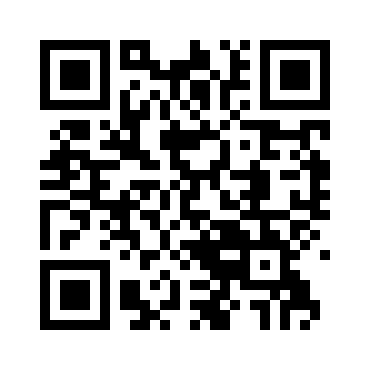Quirc
29 Dec 2012
QR codes are a type of high-density matrix barcodes, and quirc is a library for extracting and decoding them from images. It has several features which make it a good choice for this purpose:
It is fast enough to be used with realtime video: extracting and decoding from VGA frame takes about 50 ms on a modern x86 core.
It has a robust and tolerant recognition algorithm. It can correctly recognise and decode QR codes which are rotated and/or oblique to the camera. It can also distinguish and decode multiple codes within the same image.
It is easy to use, with a simple API described in a single commented header file (see below for an overview).
It is small and easily embeddable, with no dependencies other than standard C functions.
It has a very small memory footprint: one byte per image pixel, plus a few kB per decoder object.
It uses no global mutable state, and is safe to use in a multithreaded application.
BSD-licensed, with almost no restrictions regarding use and/or modification.

The distribution comes with, in addition to the library, several test programs. While the core library is very portable, these programs have some additional dependencies. All of them require libjpeg, and two (quirc-demo and inspect) require SDL. The camera demos use Linux-specific APIs:
quirc-demoThis is an real-time demo which requires a camera and a graphical display. The video stream is displayed on screen as it’s received, and any QR codes recognised are highlighted in the image, with the decoded information both displayed on the image and printed on stdout.
quirc-scannerThis program turns your camera into a barcode scanner. It’s almost the same as the
demoapplication, but it doesn’t display the video stream, and thus doesn’t require a graphical display.qrtestThis test is used to evaluate the performance of library. Given a directory tree containing a bunch of JPEG images, it will attempt to locate and decode QR codes in each image. Speed and success statistics are collected and printed on stdout.
inspectThis test is used for debugging. Given a single JPEG image, it will display a diagram showing the internal state of the decoder as well as printing additional information on stdout.
Installation
The source is hosted on github, and you can clone the repository with:
git clone git://github.com/dlbeer/quirc.gitIf you don’t have git installed, you can download a snapshot.
To build the library and associated demos/tests, type make. Type make install to install the library, header file and camera demos.
You can specify one or several of the following targets if you don’t want, or are unable to build everything:
- libquirc.a
- libquirc.so
- qrtest
- inspect
- quirc-scanner
- quirc-demo
SvartalF has put together a set of Python bindings for the quirc library. Source is available on github, and a package is available from PyPI.
Library use
All of the library’s functionality is exposed through a single header file, which you should include:
#include <quirc.h>To decode images, you’ll need to instantiate a struct quirc object, which is done with the quirc_new function. Later, when you no longer need to decode anything, you should release the allocated memory with quirc_destroy:
struct quirc *qr;
qr = quirc_new();
if (!qr) {
perror("Failed to allocate memory");
abort();
}
/* ... */
quirc_destroy(qr);Having obtained a decoder object, you need to set the image size that you’ll be working with, which is done using quirc_resize:
if (quirc_resize(qr, 640, 480) < 0) {
perror("Failed to allocate video memory");
abort();
}quirc_resize and quirc_new are the only library functions which allocate memory. If you plan to process a series of frames (or a video stream), you probably want to allocate and size a single decoder and hold onto it to process each frame.
Processing frames is done in two stages. The first stage is an image-recognition stage called identification, which takes a grayscale image and searches for QR codes. Using quirc_begin and quirc_end, you can feed a grayscale image directly into the buffer that quirc uses for image processing:
uint8_t *image;
int w, h;
image = quirc_begin(qr, &w, &h);
/* Fill out the image buffer here.
* image is a pointer to a w*h bytes.
* One byte per pixel, w pixels per line, h lines in the buffer.
*/
quirc_end(qr);Note that quirc_begin simply returns a pointer to a previously allocated buffer. The buffer will contain uninitialized data. After the call to quirc_end, the decoder holds a list of detected QR codes which can be queried via quirc_count and quirc_extract.
At this point, the second stage of processing occurs – decoding. This is done via the call to quirc_decode, which is not associated with a decoder object.
int num_codes;
int i;
/* We've previously fed an image to the decoder via
* quirc_begin/quirc_end.
*/
num_codes = quirc_count(qr);
for (i = 0; i < num_codes; i++) {
struct quirc_code code;
struct quirc_data data;
quirc_decode_error_t err;
quirc_extract(qr, i, &code);
/* Decoding stage */
err = quirc_decode(&code, &data);
if (err)
printf("DECODE FAILED: %s\n", quirc_strerror(err));
else
printf("Data: %s\n", data.payload);
}quirc_code and quirc_data are flat structures which don’t need to be initialized or freed after use.

Copyright
Copyright (C) 2010-2012 Daniel Beer <dlbeer@gmail.com>
Permission to use, copy, modify, and/or distribute this software for any purpose with or without fee is hereby granted, provided that the above copyright notice and this permission notice appear in all copies.
THE SOFTWARE IS PROVIDED “AS IS” AND THE AUTHOR DISCLAIMS ALL WARRANTIES WITH REGARD TO THIS SOFTWARE INCLUDING ALL IMPLIED WARRANTIES OF MERCHANTABILITY AND FITNESS. IN NO EVENT SHALL THE AUTHOR BE LIABLE FOR ANY SPECIAL, DIRECT, INDIRECT, OR CONSEQUENTIAL DAMAGES OR ANY DAMAGES WHATSOEVER RESULTING FROM LOSS OF USE, DATA OR PROFITS, WHETHER IN AN ACTION OF CONTRACT, NEGLIGENCE OR OTHER TORTIOUS ACTION, ARISING OUT OF OR IN CONNECTION WITH THE USE OR PERFORMANCE OF THIS SOFTWARE.